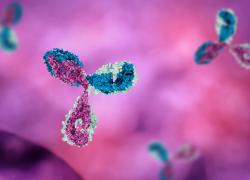
MacroGenics gets that sinking feeling
Tamarack data reveal vobra-duo’s toxicity, and wipe out the past six months’ share price gains.
Tamarack data reveal vobra-duo’s toxicity, and wipe out the past six months’ share price gains.

Another day, another sign of misplaced biotech investor exuberance. MacroGenics stock had climbed nearly threefold over the past six months on expectations of data from its Tamarack study – including a bizarre 30% climb when the trial was rejected for presentation at ASCO – but today it was brought down to earth when the results were unveiled and showed a surge in adverse events.
Only yesterday CytomX suffered a similar fate as its shares, bid up strongly on the promise of clinical data, collapsed on the results’ actual presentation. For MacroGenics the problem is amplified by the fact that Tamarack’s subject, vobramitamab duocarmazine, is its lead project, and the company now plans to push straight into a phase 3 study.
Vobra-duo is an ADC that targets B7-H3, and it’s been in the spotlight as enthusiasm grew over Tamarack, its phase 2 study in post-Xtandi/Zytiga metastatic castration-resistant prostate cancer. The key focus of Tamarack has been safety: Tamarack tests lower vobra-duo dosing (2mg/kg or 2.7mg/kg every four weeks) after toxicities were seen at 3mg/kg every three weeks in phase 1.
Toxicity
And it's toxicity that has come back to haunt MacroGenics. Last night’s Tamarack presentation revealed a 13% rate of discontinuations due to treatment-emergent adverse events, versus 3% when MacroGenics toplined Tamarack safety data in April; in addition there were five AE-related deaths, versus none a month ago.
The reason MacroGenics press released those initial safety data was that its ASCO abstract, submitted as a placeholder with no efficacy results, was rejected by the meeting’s organisers. Instead the company played up vobra-duo’s improved tolerability, and promised to reveal more safety plus efficacy from Tamarack by press release later; this is what it did last night.
Unfortunately, with toxicity worsening meaningfully between the two data cutoffs, vobra-duo’s new dosing plan looks no better than the earlier one. At 3mg/kg every three weeks in phase 1 severe AEs emerged in 56% of patients, with AE-related discontinuations at 8%, and a 2% rate of fatal AEs; the Tamarack data thus appear to take vobra-duo right back to those levels of toxicity.
Vobra-duo's worsening toxicity in Tamarack
| 4 Jan 2024 cutoff | 12 Apr 2024 cutoff | ||||
|---|---|---|---|---|---|
| Dose | 2.0mg/kg Q4W | 2.7mg/kg Q4W | 2.0mg/kg Q4W | 2.7mg/kg Q4W | |
| N | 91 | 86 | 90 | 86 | |
| Any TEAE | 93% | 95% | 99% | 100% | |
| TEAE gr≥3 | 25% | 31% | 54% | 52% | |
| Drug interruption due to AE | 11% | 19% | 42% | 56% | |
| Drug discontinuation due to AE | 4% | 2% | 11% | 15% | |
| Fatal AE | 0% | 0% | 1% | 5% | |
Source: MacroGenics.
Despite this MacroGenics yesterday talked up the start of “planning activities for a potential phase 3 study that could commence next year”, claiming to have been “very encouraged by the interim updated safety data” from Tamarack.
On the efficacy side the company had earlier set targets of 40-60% for PSA50 response, and 25% for ORR. The freshly revealed Tamarack data show these thresholds just about being met: across the two dosing regimens PSA response is 37-44%, while confirmed ORR is 18-25% (the ORR number rises to 24-44% if unconfirmed responses are included).
That’s all very well, but it was safety that was always going to be the focus for Tamarack. In addition to the worrying rise in patient discontinuations, Evercore ISI’s Jonathan Miller said the five patients deaths were “maybe even more concerning”.
MacroGenics said two of the deaths (myocardial infarction and cardiac arrest) were deemed unrelated to vobra-duo, but no such assurance was given for the other three, two due to pneumonitis and one after a grade 3 pleural effusion. In phase 1 one of three deaths was deemed treatment related, while pleural effusion was highlighted as an AE of special interest, seen in 28% of trial subjects.
Sitting on a 70% share price crash this morning MacroGenics would be well advised to rethink vobra-duo rather than pushing into phase 3. Especially relevant is the company’s follow-on B7-H3-directed ADC MGC026, which uses a topoisomerase 1 inhibitor payload rather than vobra-duo’s DNA alkylating agent, and which the company recently put into phase 1.
If that unexpected move had been caused by lingering doubts over vobra-duo’s safety then such fears now seem to have been justified.
1818













